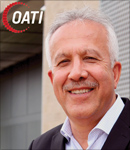The distribution grid in the United States is aging and dates back to the early days of the 20th century. Today it is still being designed, planned, and operated using the same methods and procedures that were used to accommodate the consumption patterns of yesteryear. With the proliferation of renewable and distributed sources of energy (such as solar PV) at both the distribution grid level and at customer facilities, as well as the end-use consumers’ ability to alter and manage their demand and consumption patterns, distribution grid operators are facing increasing challenges to operating the grid. The increasing number of electric vehicles and fast-charging stations at the commercial level and at private residences also adds to the problem. Reversal of power flows, equipment overloading, phase imbalances, increased losses, and voltage fluctuations are just some examples of the challenges that grid operations personnel are facing.1
Most Distributed Energy Resources (DERs) and Demand Response (DR) capabilities are located in the secondary and tertiary parts of the grid where operators have little or no visibility. This is because most conventional Distribution Management Systems (DMS) rely on analytical tools, such as three-phase power flow calculation engines and state estimation methods, which were originally designed for analyzing balanced transmission networks using mathematical models of the grid equipment. Since the data to properly model the distribution grid (especially in the secondary and tertiary circuits) may not be readily available, these tools have become ineffective. As such, the majority of DMS installations provide visibility only to distribution substations, feeders, and primary circuits. In these installations, the grid operators manage only the visible parts of the grid and rely on autonomous operations of grid equipment downstream in lower parts of the grid.
Another problem often seen at a typical distribution operations center is the existence of many data silos, which are designed for various activities, with little or no exchange of data among them. Examples of such data silos include DMS, Outage Management Systems (OMS), Customer Information Systems (CIS), Geographical Information Systems (GIS), and Meter Data Management (MDM) Systems, among others. Often, the same data is duplicated and managed independently in two or more data silos.
Advanced Metering Infrastructure (AMI) Systems, when properly designed, can offer great sources of data and information from the deepest parts of the grid, the customer-side of the meter, and grid-edge assets. However, in most AMI implementations, the focus is on customer metering and billing and many of the advantages offered by the AMI go unused.
Addressing the Challenge
When coupled with new analytical techniques, new sensing, communications, and control technologies can provide the opportunities and tools needed to assist operators in properly managing the grid. These technologies give grid operators the ability to use the very same DER and DR assets that are causing operational issues as tools to address them. In addition, the emergence of smart inverters offers another set of tools and capabilities to assist in grid operations. A smart inverter can provide support for grid operations by connecting generation and storage assets in a variety of control modes to address local and system-wide operational and reliability issues.
The proper management and coordinated scheduling of DER and DR assets, in conjunction with other conventional resources, is the key to addressing grid operational issues. In order for these initiatives to be successful, grid operators must have complete visibility and situational awareness to these assets, the ability to analyze their impact on the grid, and the capability to manage and control these assets in near real-time. This, combined with the analytical capabilities to optimize and coordinate the scheduling, dispatch, and control of all DER and DR assets (in conjunction with other conventional assets), will enable the operators to utilize all of the capabilities provided by grid-connected and customer-side assets to maximize the return on their investments.
To this end, a Distributed Energy Resource Management System (DERMS) is required with the following functionalities:
Data Acquisition and Control: Requirements for a modern and cost-effective system include two-way communications and control functionality, the ability to monitor all grid-edge and DER/DR assets, and the ability to exercise control. Public or private internet provides the communications platform. Where existing broadband internet capabilities are lacking, cellular technologies may be used to establish the required communications and control capabilities. It is also important to consider cyber and physical security issues, as every grid-edge device presents another entry point for malicious activities and unauthorized intrusions.
Distribution Grid Modeling and Analysis: The distribution grid, as well as all load and generation resources, will need to be modeled in detail. Most DER/DR and grid-edge devices are connected at the customer-side of the meter or in the last miles of the distribution grid. As electrical characteristics of last-mile and tertiary circuits may not be readily available, the conventional model-driven network analysis tools – such as three-phase state estimators and power flows—will not work. New data-driven network analysis tools that utilize a wealth of data from AMI and other sources to model the distribution grid and all assets will be required. These tools enable system operators to analyze the impacts to the grid of grid-edge devices and will allow them to develop operating schedules and dispatch instructions that take the limitations imposed by the grid into consideration.
Breaking Data Silos: To enable DER/DR and other grid-edge devices to participate in the operation of the system, a single and consistent system of record containing all grid, customer, and asset data is required. This capability can be provided by breaking various data silos and collecting and managing all data in one system.
Forecasting, Scheduling, Dispatch, and Control Functions: These functions require the ability to forecast the availabilities and capabilities of all grid-edge devices. The forecasting function must take into consideration exogenous parameters such as time of day, solar irradiation, or temperature, as well as the technical capabilities of all assets. The ability to schedule, dispatch, and control all assets is also a required capability of the system. These schedules can be determined ahead of time and executed automatically or based on event triggers. They can also be developed ad hoc and executed manually.
Optimization: In order to get the most out of all conventional and renewable sources of energy and DR, scheduling and dispatch needs to be coordinated and optimized. Optimization may include operational as well as economic objectives. The optimization process will also need to take various grid and asset capabilities and constraints into consideration, in order to arrive at practical and implementable schedules.
Asset Monitoring and Performance Analysis: As most DER/DR and grid-edge devices reside at the customer side of the meter, the ability to monitor their performance and adherence to control instructions is required. Performance data can also be used as a part of forecasting functions, as well as for billing and invoicing purposes.
System Heartbeat Monitoring: Given the number of interconnection points and the multitude of legacy and third-party systems involved, monitoring the health of various systems and communications links is important. A heartbeat monitoring system will continuously observe all systems and communications facilities and will alert the operator of any malfunctions.
By properly integrating all field data from various sources, breaking silos of data, forecasting and optimizing the operational schedules of all assets, and analyzing the state of the grid and the impacts of DER/DR operational schedules on the grid, distribution utilities can provide better power quality for their end-users. At the same time, distribution grid operators will have access to a wide set of tools and resources to effectively operate the grid and to address operational issues.
About the Author
 Dr. Farrokh Albuyeh has more than 30 years of experience in the electric power industry, developing and implementing power system applications and systems, as well as managing and delivering projects. In his role as Senior Vice President of Smart Grid Projects at OATI, he is involved in the development and delivery of solutions and services for wholesale energy markets, applications for scheduling and managing DR and DER, as well as the development and delivery of solutions to support distribution grid renovation. Dr. Albuyeh has specific experience with technical analytical studies, application software development, providing consulting services, and managing and delivering large-scale projects.
Dr. Farrokh Albuyeh has more than 30 years of experience in the electric power industry, developing and implementing power system applications and systems, as well as managing and delivering projects. In his role as Senior Vice President of Smart Grid Projects at OATI, he is involved in the development and delivery of solutions and services for wholesale energy markets, applications for scheduling and managing DR and DER, as well as the development and delivery of solutions to support distribution grid renovation. Dr. Albuyeh has specific experience with technical analytical studies, application software development, providing consulting services, and managing and delivering large-scale projects.
1 Grid of the Future -Are we Ready to Transition to a Smart Grid?” A. Ipakchi, F. Albuyeh; IEEE Power & Energy Magazine, March/April- 2009, pp 52-62
(Reprinted in special IEEE PES Publication on Smart Grid in March 2010)







